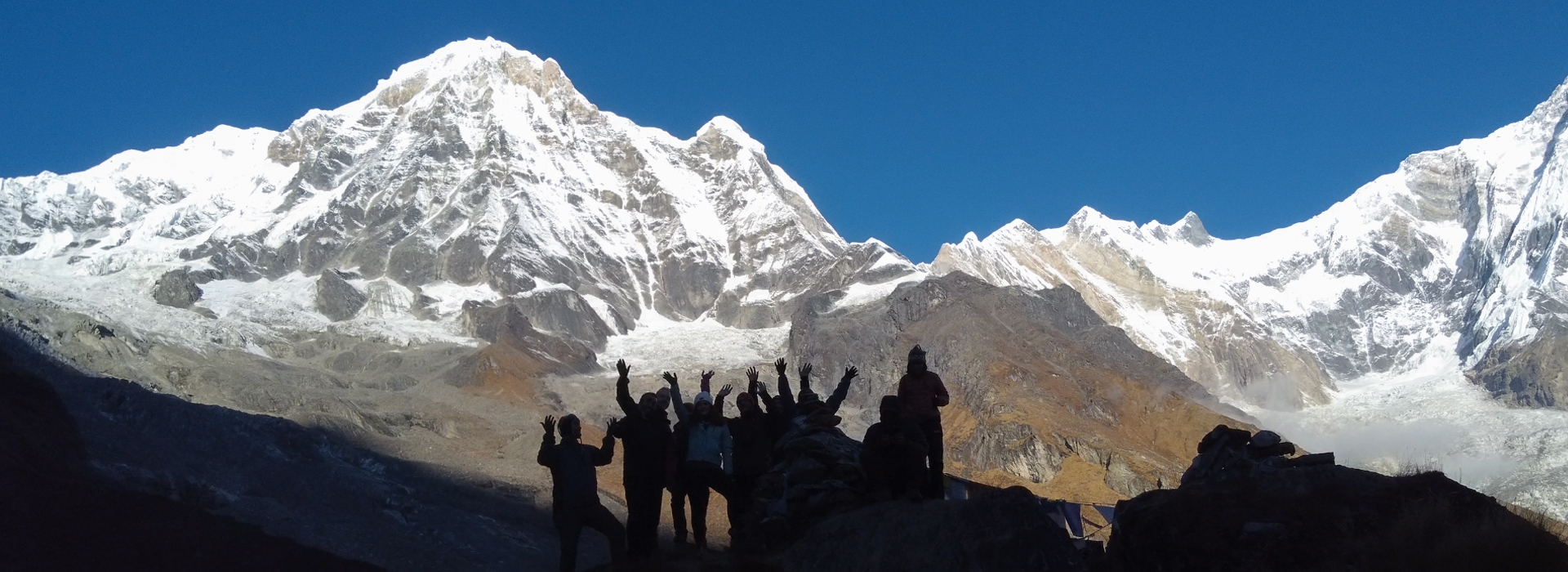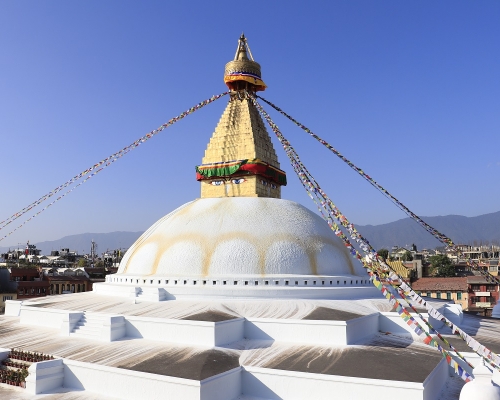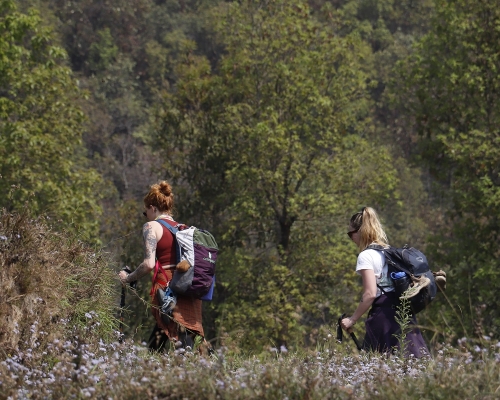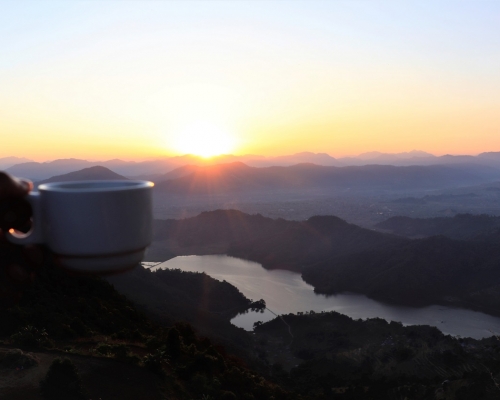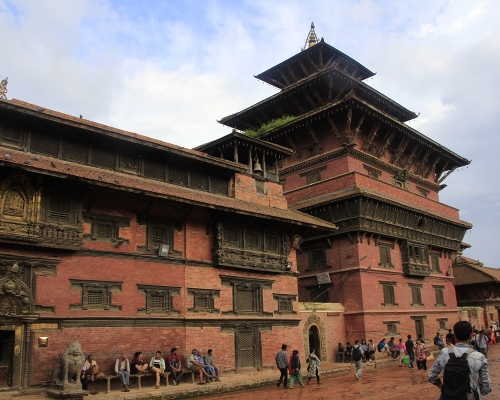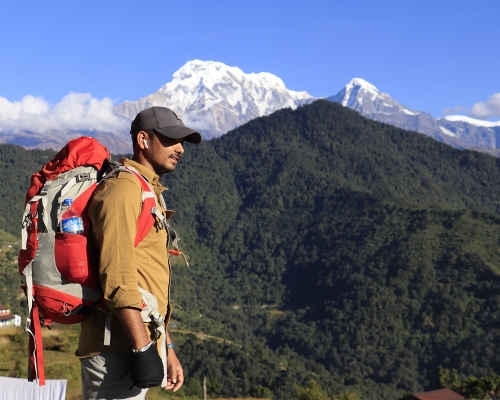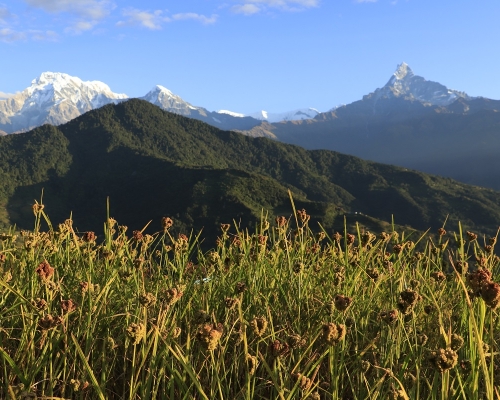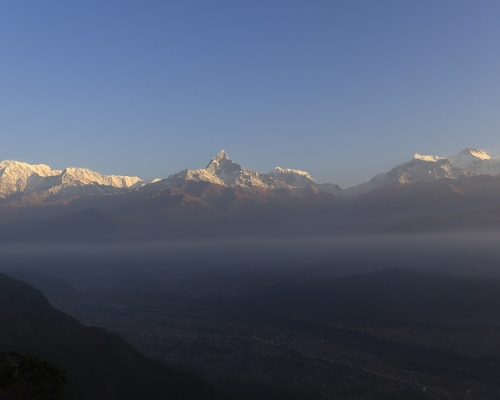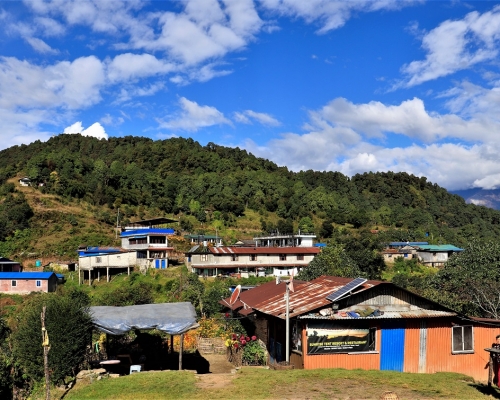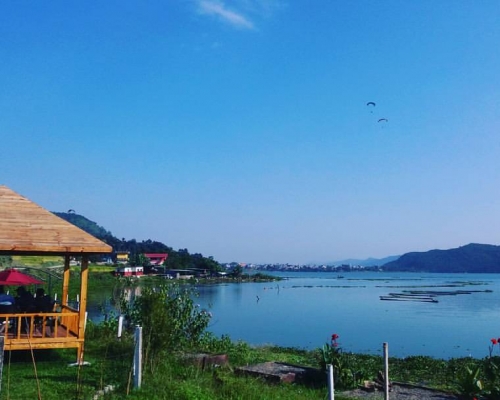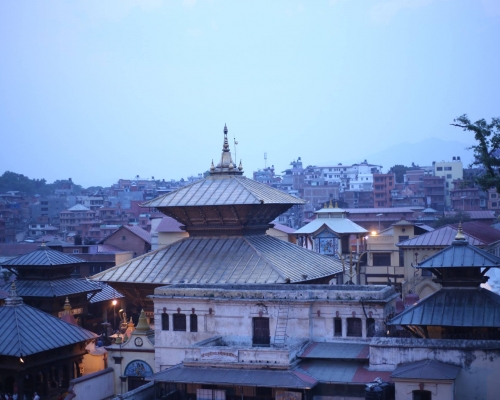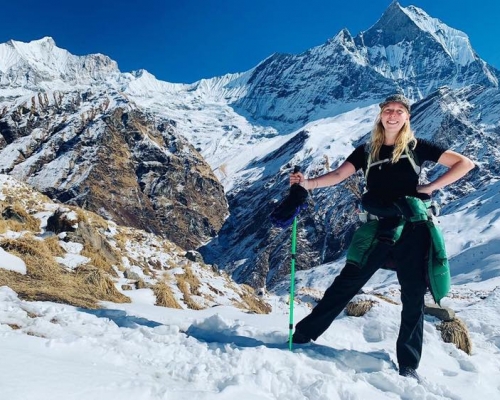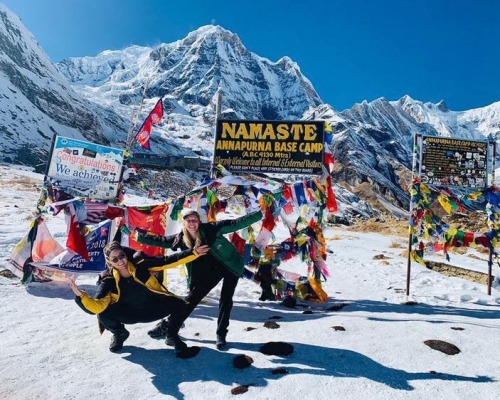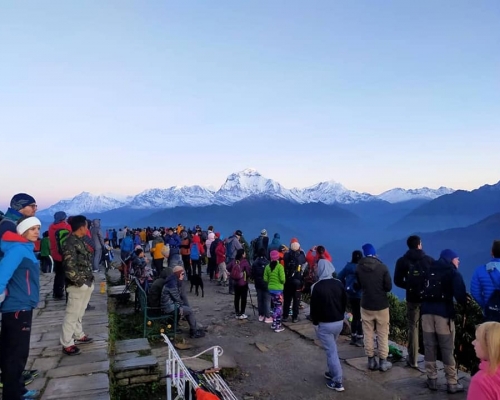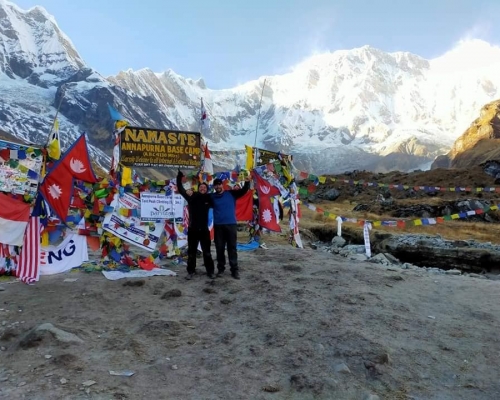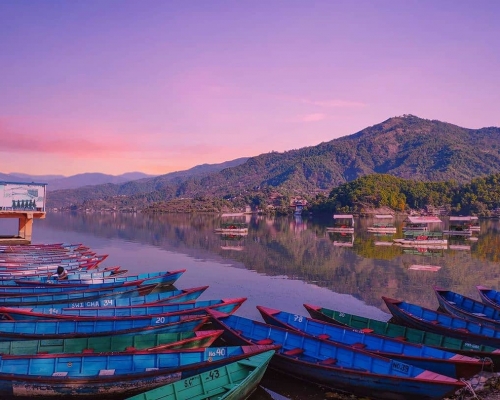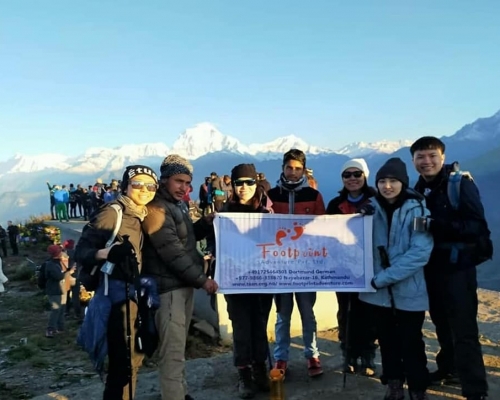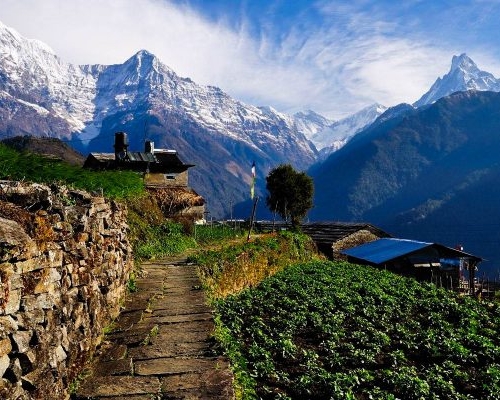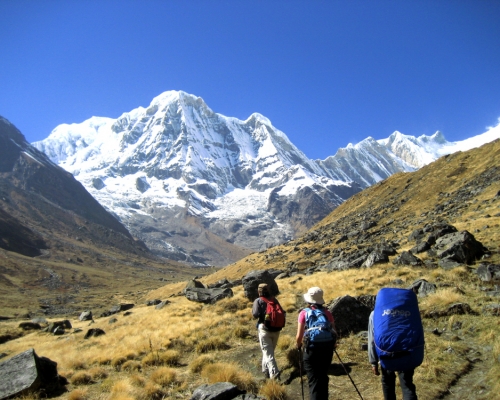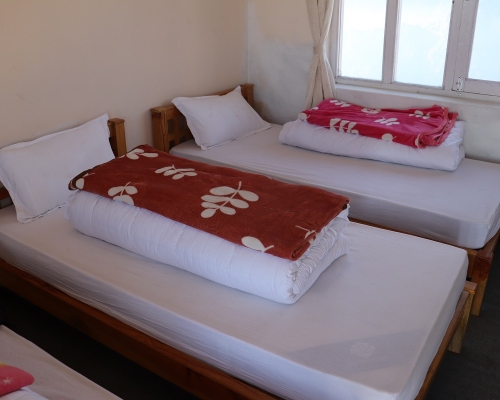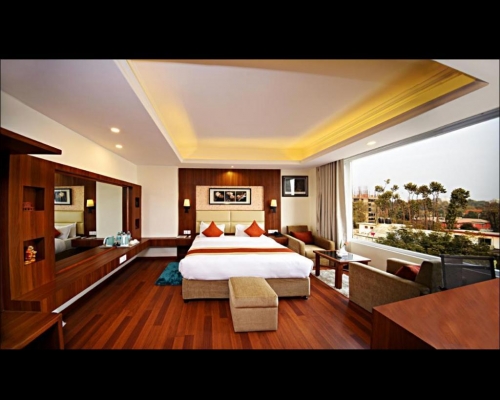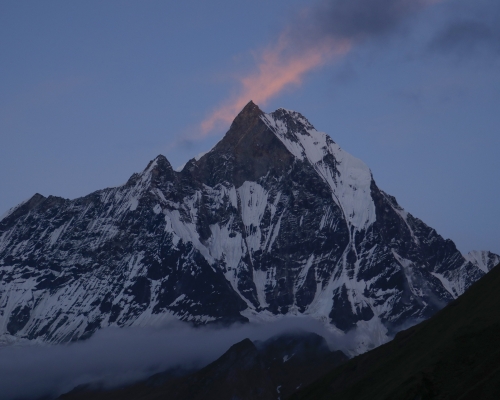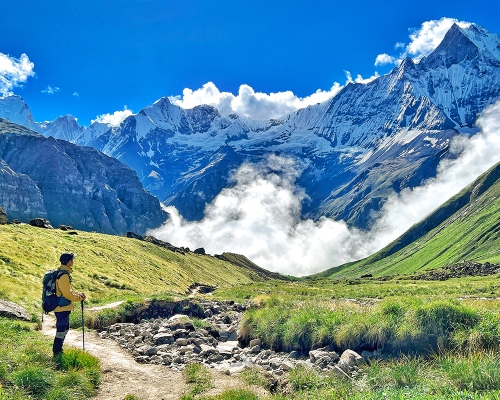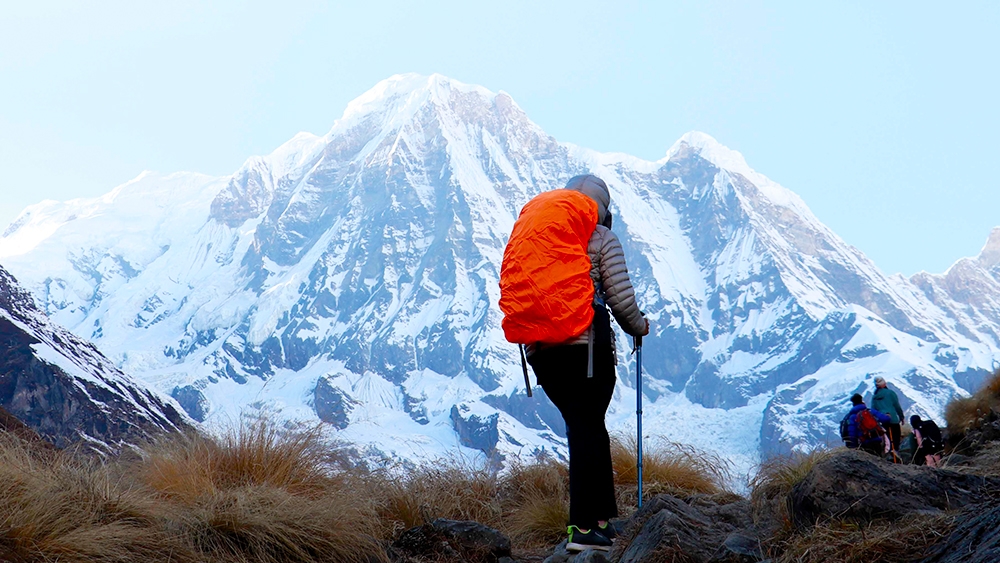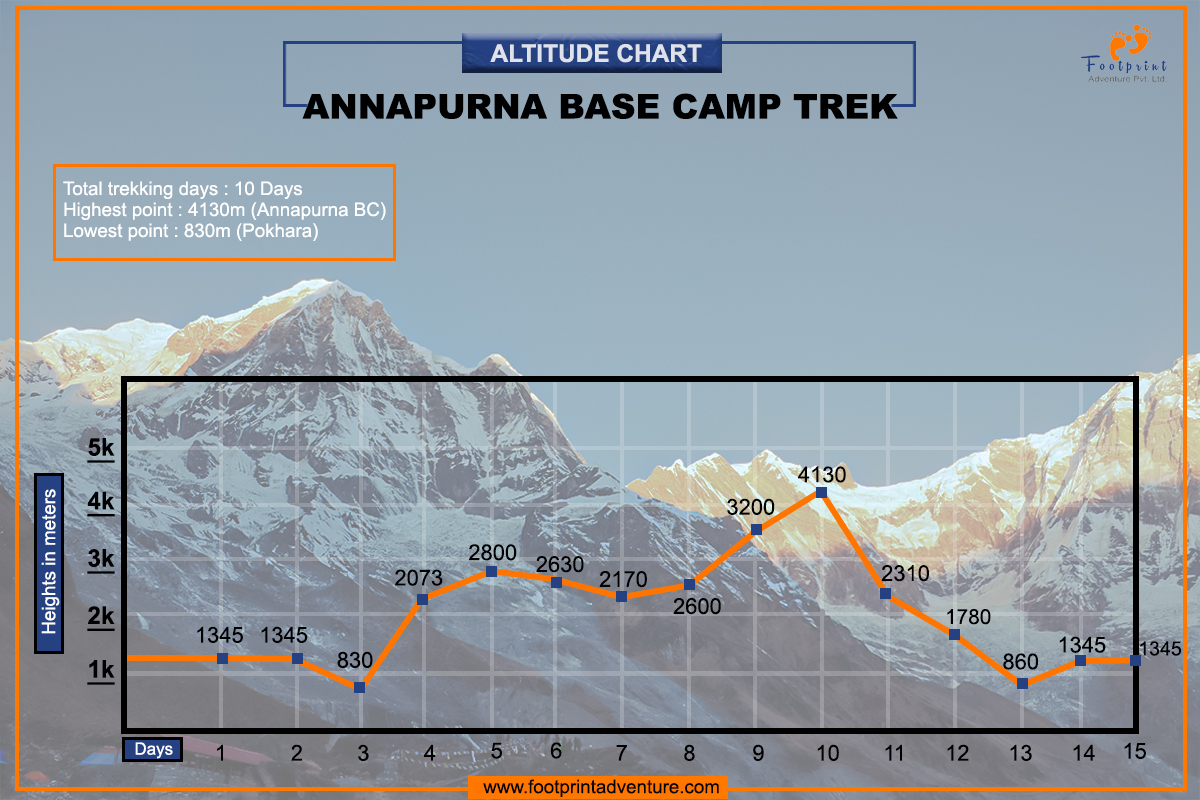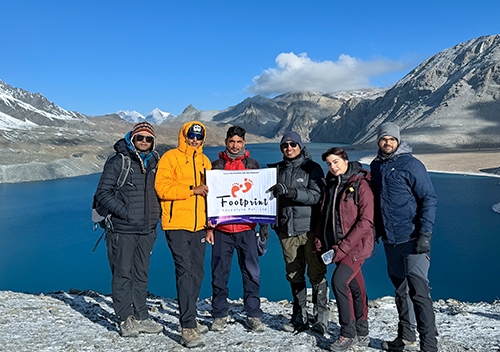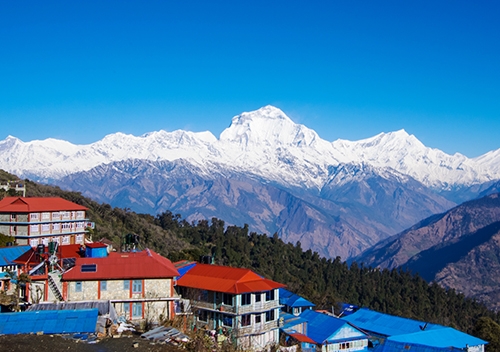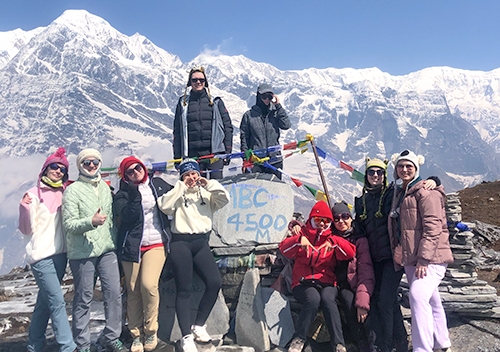Overview of the 10 Days Annapurana Base Camp Trek
The Annapurna Base Camp trek is one of the most well-known trekking routes in Nepal, and the 10-day Annapurna Base Camp trek package is undoubtedly one of the most popular choices among trekkers hiking the Annapurna region. In a short period of time, this trek allows travelers to explore diverse landscapes and villages while hiking directly to the base of Annapurna I, the 10th-highest mountain in the world. The route passes through different types of terrain, including the Annapurna Sanctuary, a high-altitude glacial basin surrounded by peaks such as Machhapuchhre, Annapurna South, Hiunchuli, and Gangapurna. Trekkers also pass through traditional Gurung and Magar villages, offering opportunities to experience local culture, taste traditional food, and observe the daily lifestyle of the mountain communities.
This 10-day Annapurna Base Camp trek itinerary starts in Kathmandu, with a drive to Pokhara, the main gateway to the Annapurna region. From Pokhara, the journey continues by road to Kimche, followed by a short trek to Ghandruk, a well-known Gurung village. Ghandruk is one of the largest Gurung villages in Nepal, offering a glimpse into traditional Gurung culture, including stone houses, local crafts, and cultural performances. The village also provides stunning close-up views of Annapurna South and Machhapuchhre, making it a popular stop for trekkers early in the journey. The route then goes through Sinuwa, Deurali, and Machhapuchhre Base Camp before reaching Annapurna Base Camp (4,130 m / 13,550 ft). Along the way, trekkers walk through rhododendron and bamboo forests, cross suspension bridges, and follow the Modi Khola valley.
At Annapurna Base Camp, you stand in the middle of a natural amphitheater surrounded by peaks above 7,000 m. From ABC, you can see Annapurna I (8,091 m), Annapurna South (7,219 m), Machhapuchhre (6,993 m), Hiunchuli (6,441 m), Gangapurna (7,454 m), and several other peaks in the Annapurna range. Sunrise from ABC is a highlight, as the mountains gradually light up in golden shades. The return follows the same trail, with overnight stops at Bamboo and Jhinu Danda, where you can relax in natural hot springs before heading back to Pokhara and Kathmandu.
The short Annapurna Base Camp trek is suitable for trekkers with limited time, while the longer route allows for a more gradual pace. Whether you are a beginner or an experienced hiker, the Annapurna Base Camp trek for beginners and seasoned trekkers is a rewarding journey. For details such as the Annapurna Base Camp trek cost, itinerary options, and preparation tips, you can explore our complete guidebook to the Annapurna Base Camp. Footprint Adventure runs regular treks to this region and can also help you customize your Annapurna Base Camp trekking itinerary to match your interests and travel style.
This Annapurna Base Camp trek package can be customized for a slower pace or a shorter version depending on your preference. It is also possible to combine the trek with the Ghorepani–Poon Hill trek. From Poon Hill (3,210 m), trekkers see a wide panorama of peaks including Dhaulagiri, Annapurna I, and Machhapuchhre.
Highlights of the 10 Days Annapurna Base Camp Trek
- On your drive from Kathmandu to Pokhara, enjoy the Himalayan foothills, rivers, terraced fields, and your first views of rural Nepalese scenery and life.
- Explore the peaceful, traditional Gurung village of Kimche and Ghandruk, which are two famous villages with stone-paved streets with stunning views of Annapurna South and Machapuchare.
- Visit the Ghandruk Museum to learn about the detailed Gurung culture, explore traditional artifacts, and view local history from the Annapurna region.
- Trek through the rich rhododendron and bamboo forests at Lower Sinuwa, home to calm natural trails and local Himalayan flora.
- Visit Machapuchare Base Camp (MBC) and experience amazing mountain views while acclimatizing to the altitude.
- Explore Visit Annapurna Base Camp (ABC) and experience a breathtaking 360° view of Annapurna I, II, III, IV, Machapuchare, and Hiunchuli, particularly at sunrise or sunset.
- Rest in the natural hot springs at Jhinu Danda and relax your tired muscles while enjoying views of the surrounding hills.
Major Highlights of the Annapurna Base Camp Trek
Mesmerizing Mountain views
The primary reason for trekking to Annapurna Base Camp is undoubtedly the views of the surrounding scenery. The main mountain visible from base camp is Annapurna I, which is 8,091m, the 10th-highest mountain in the world. It is a massive wall of rock and ice, with its south face being one of the single largest and steepest in the world. Its impressive height is a key feature of the views you will witness, as you will enjoy superb views of this mountain as it constantly confronts you. In addition, on the trek ascent to base camp, you will enjoy spectacular views of Annapurna South (7,219 m), Hiunchuli (6,441 m), Machapuchare or Fishtail (6,993 m), Gangapurna (7,455 m), and Lamjung Himal (6,983). Each peak can be viewed at various points along the trek, each showing unique angles and shapes. There is nothing comparable to the feeling of seeing these peaks close up and clearly.
Ghandruk Village
Ghandruk village is another prominent highlight of the Annapurna Base Camp trek, situated at around 1,940 meters in the Kaski District. Ghandruk is a traditional Gurung village and allows the visitor to experience the local culture and way of life. The village is mainly inhabited by the Gurung people, who have maintained their language, customs, and traditions. Within the village, there is a small museum, which is dedicated to explaining the history and culture of the area. For trekkers going on the ABC trekking route, Ghandruk is one of the most significant stops along the route for accommodation, food, and access to adjoining trails. Visitors can also enjoy spectacular views to the mountains close to Ghandruk, including Annapurna South, Machapuchare, and Hiunchuli.
Prominent ethnic groups and cultures
In terms of physicality, Annapurna Base Camp is a moderate-grade hike, but at the same time, it is a spiritually awakening trip. You'll pass through small villages and settlements in Gurung and Magar, Nepal. The rhododendron-lined paths radiate the cultural significance of the villages and the villagers. This ethnicity of Nepal is settled mostly in the lower belt of the Annapurna region of Nepal. But those involved in hospitality live up to the Base Camp of Annapurna to serve trekkers from all around the world. The Gurungs and Magars in Nepal follow Buddhism, so you'll encounter little chores and gumbas along the trails. Pine and bamboo forests offer a wonderful escape from metropolitan life.
Is This Trip the Right Fit For You?
The Annapurna Base Camp Trek is considered moderately physically demanding. The trek involves walking for around 6-7 hours a day on occasionally steep and uneven ground, and you will reach your highest altitude of about 4130m (13,550 feet). Although this is not as high as some other treks in the Himalayas, the air is thinner, and this can still pose a challenge, particularly if you do not do much exercise or hiking or haven't hiked in a while.
If you're able to walk for two or more hours at a time, you're off to a wonderful start. The physical training you'll be doing when you walk, hike, or jog will help you immensely. We also encourage some cross-training (cycling, swimming, treadmill, etc.) and building endurance on your time before your trek. A gym is not necessary, but you do want to be active. Most healthy folks can do this trek with a little preparation, and you will enjoy an incredible journey to Annapurna Base Camp.
What is the Difficulty Level of the Annapurna Base Camp Trek?
The difficulty of the 10-day Annapurna Base Camp Trek depends on your fitness level. However, due to the well-maintained trails and a measured increase in elevation, the ABC trek is achievable for hikers. The Annapurna Base Camp Trek typically takes up to 10-12 days, with options for shorter itineraries too.
The moderate walk to Annapurna Base Camp trek doesn't need technical mountaineering knowledge. Although a 115 km (72 mi) round trip from the trailhead may seem far, you will be walking for 6 out of the entire 10 days of the expedition. It means that you will walk an average of 14.5 kilometers (9 miles) per day (13,550 feet) to reach an altitude of 4,130 m. The walk is only difficult due to the number of days spent hiking and exploring a specific area in Deurali. Aside from that, it's an easy trip that anyone can take and is much easier than the Annapurna Circuit or Everest Base Camp trek.
When is the time to do the Annapurna Base Camp Trek?
Any time of the year is a good time to go on the Annapurna Base Camp Trek because every season offers a unique trekking experience. The ideal time for the Annapurna Base Camp Trek depends on your preferences for the weather and your goals for the journey. The two best seasons to visit Annapurna Base Camp Trek are autumn (September to October) and spring (March to May). The weather and temperature are ideal for trekking during these times. The skies are clear, and the days are pleasant and bright. The mountain views are breathtaking. Additionally, there is rarely any probability of precipitation throughout these seasons.
How to Prepare for Annapurna Base Camp Trek?
Knowing how to prepare for the Annapurna Base Camp trek is crucial to being able to accomplish it successfully and getting the best out of it. Start training two to three months ahead of the trek. Do cardio activities such as running, cycling, swimming, or hiking three to five times a week to build stamina. Add strength exercises such as squats, lunges, planks, and step-ups to strengthen legs and core. Practice walking on uneven ground with a backpack to acclimatize yourself to walking long hours daily, which is one of the greatest tips for successfully trekking to Annapurna Base Camp.
Mental preparation is also required. The trek passes through remote Himalayan landscapes with simple facilities and unpredictable weather changes. Being optimistic, tolerant, and hardy of mind will allow you to adapt and maximize the experience.
Pack light and smart. Pack layering clothes, a heavy down jacket, good trekking shoes, thermals, gloves, and rain clothing. A good sleeping bag is a must for cold nights. Do not overpack, and carry a porter if needed. For further gear information, see the whole guide of the Annapurna Base Camp trek packing list.
Understand altitude sickness and take acclimatization seriously. Drink plenty of water, eat, and walk steadily. Join a good trekking company to ensure safety, guidance, and local knowledge.
Why Choose Footprint Adventure for the Annapurna Base Camp?
If you are planning to trek to do the 10-day Annapurna Base Camp trek, then Footprint Adventure is here to provide you with safe, smooth, and unforgettable trekking experiences. We offer secure and well-organized trips led by government-certified, experienced guides. We prioritize your safety, comfort, and amazing trekking experience. We offer flexible itineraries, guaranteed best prices, and personalized services to match requirements. As a responsible travel company, we support local communities and practice sustainable tourism. Our high success rate and positive reviews show our commitment to quality and customer satisfaction. With Footprint Adventure, you get reliable support, professional guidance, and a meaningful trekking journey in Nepal. We frequently organize treks to Annapurna Base Camp and plan itineraries according to your needs and desires. For more queries, contact us.

